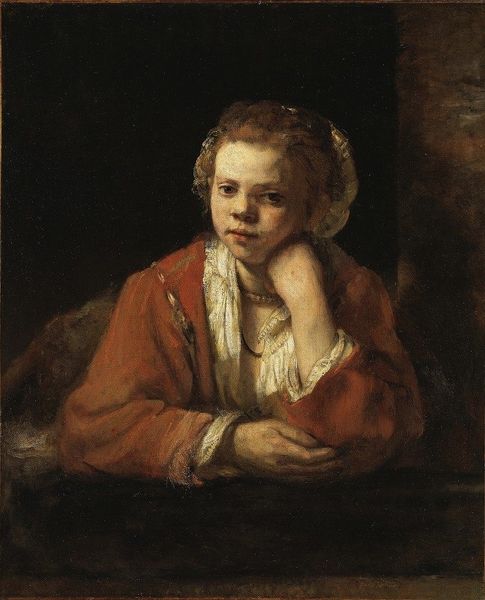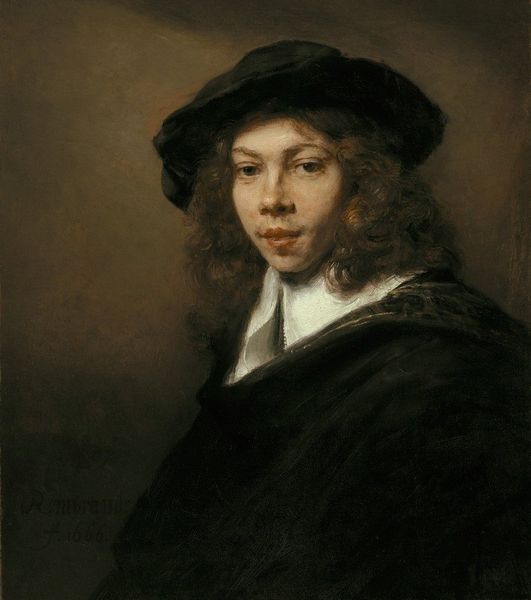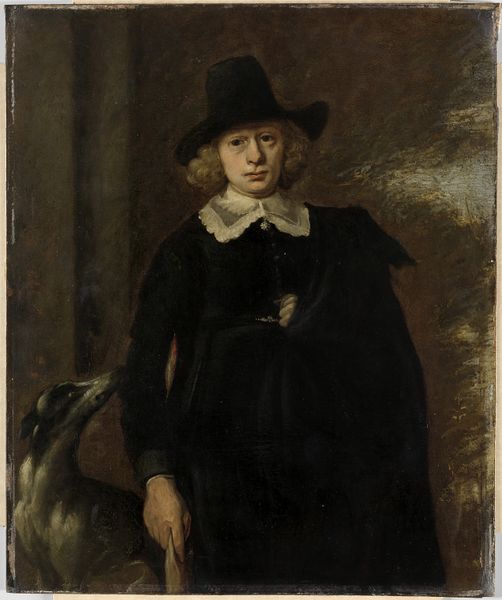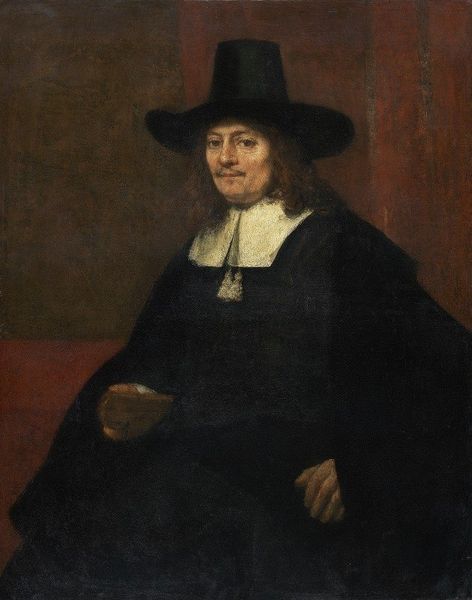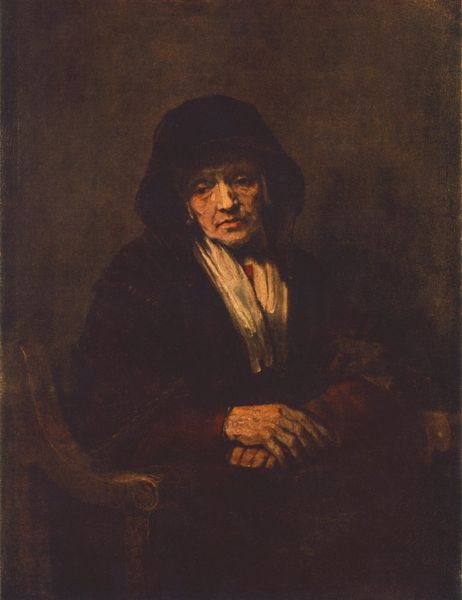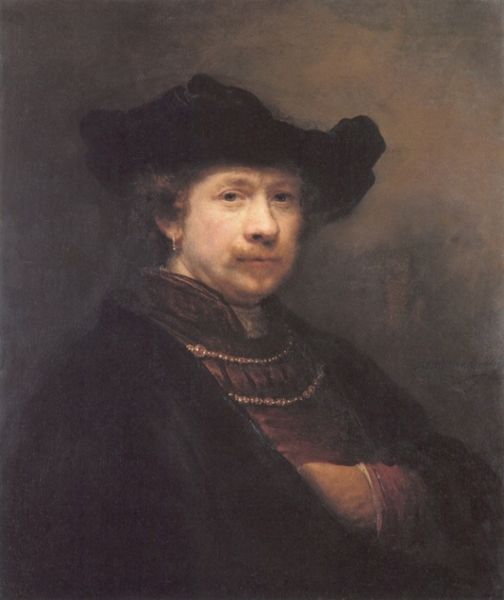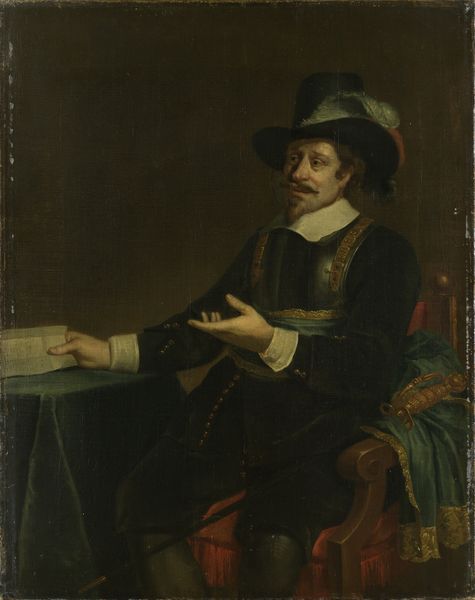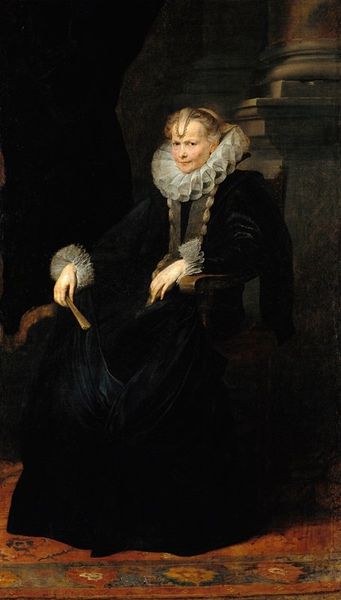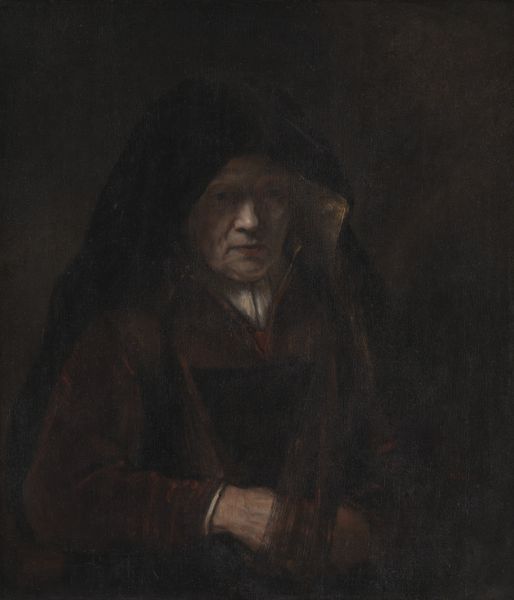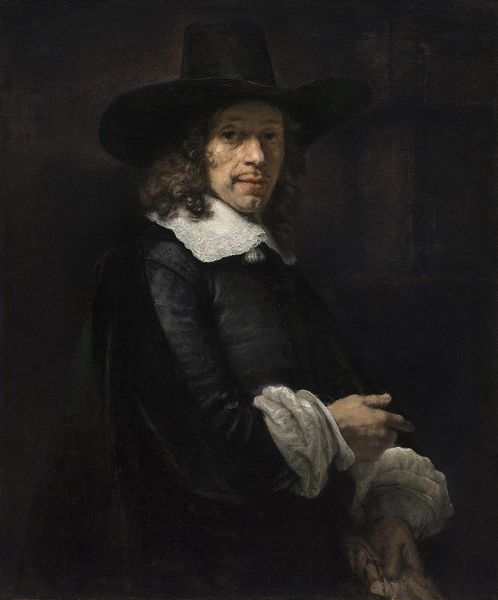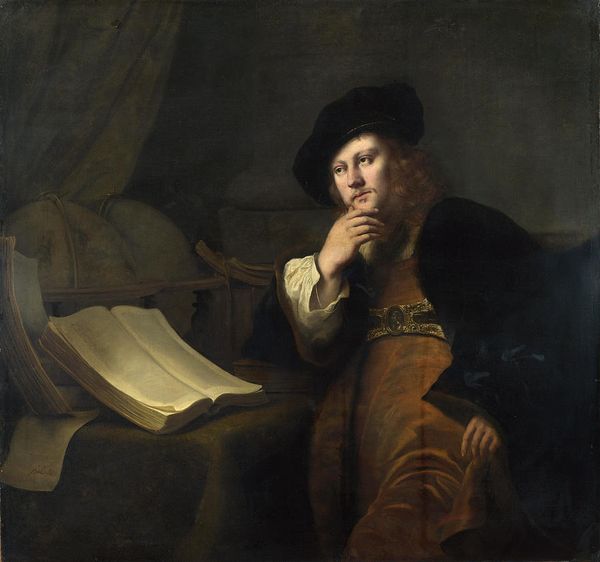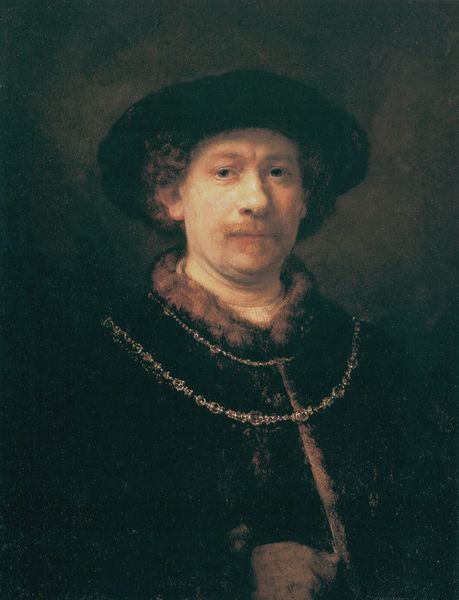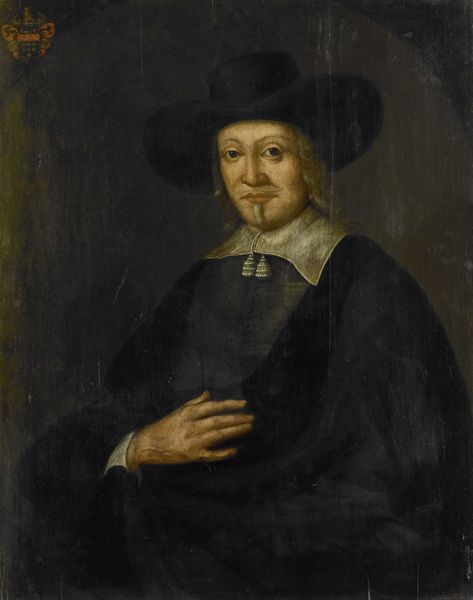
painting, oil-paint
#
portrait
#
figurative
#
self-portrait
#
baroque
#
portrait image
#
dutch-golden-age
#
portrait
#
painting
#
oil-paint
#
figuration
#
portrait reference
#
portrait head and shoulder
#
animal drawing portrait
#
portrait drawing
#
facial portrait
#
portrait art
#
fine art portrait
#
digital portrait
Copyright: Public Domain: Artvee
Editor: Here we have Rembrandt van Rijn's "Portrait of Gerard de Lairesse," painted sometime between 1665 and 1667, in oils. The heavy shadow gives the portrait a secretive, almost melancholic feel. What strikes you about this piece? Curator: What I see is Rembrandt engaging with the complexities of artistic representation within the socio-political landscape of the Dutch Golden Age. Consider the power dynamics inherent in portraiture; the act of depicting someone, especially a fellow artist, carries significant weight. Editor: Weight? In what way? Curator: Well, it raises questions about artistic legacy and how artists positioned themselves in relation to one another. Rembrandt, already established, is painting de Lairesse, who would later adopt a more classical style, a divergence from Rembrandt’s baroque. Is this a gesture of camaraderie, a subtle critique, or something in between? And how do their artistic choices reflect broader cultural shifts of the time? Editor: That’s a perspective I hadn’t considered. I was focused on the more personal connection, on the play of light and shadow to create an overall mood. Curator: But that “mood” is also constructed. The way Rembrandt uses light isn’t just aesthetic; it’s rhetorical. Think about how the dramatic chiaroscuro elevates the sitter, granting him a certain importance, while simultaneously concealing parts of him. This reflects the era’s views on visibility, identity, and social status. Editor: So, beyond being just a portrait of a fellow artist, it’s a statement on their artistic standings, and the very nature of art itself in the social and historical context. Curator: Precisely. Art isn't created in a vacuum; it's always in dialogue with its time. Reflecting on Rembrandt's choices illuminates this intersection between art, power, and cultural narratives. Editor: I’ll definitely look at portraits differently now!
Comments
No comments
Be the first to comment and join the conversation on the ultimate creative platform.
